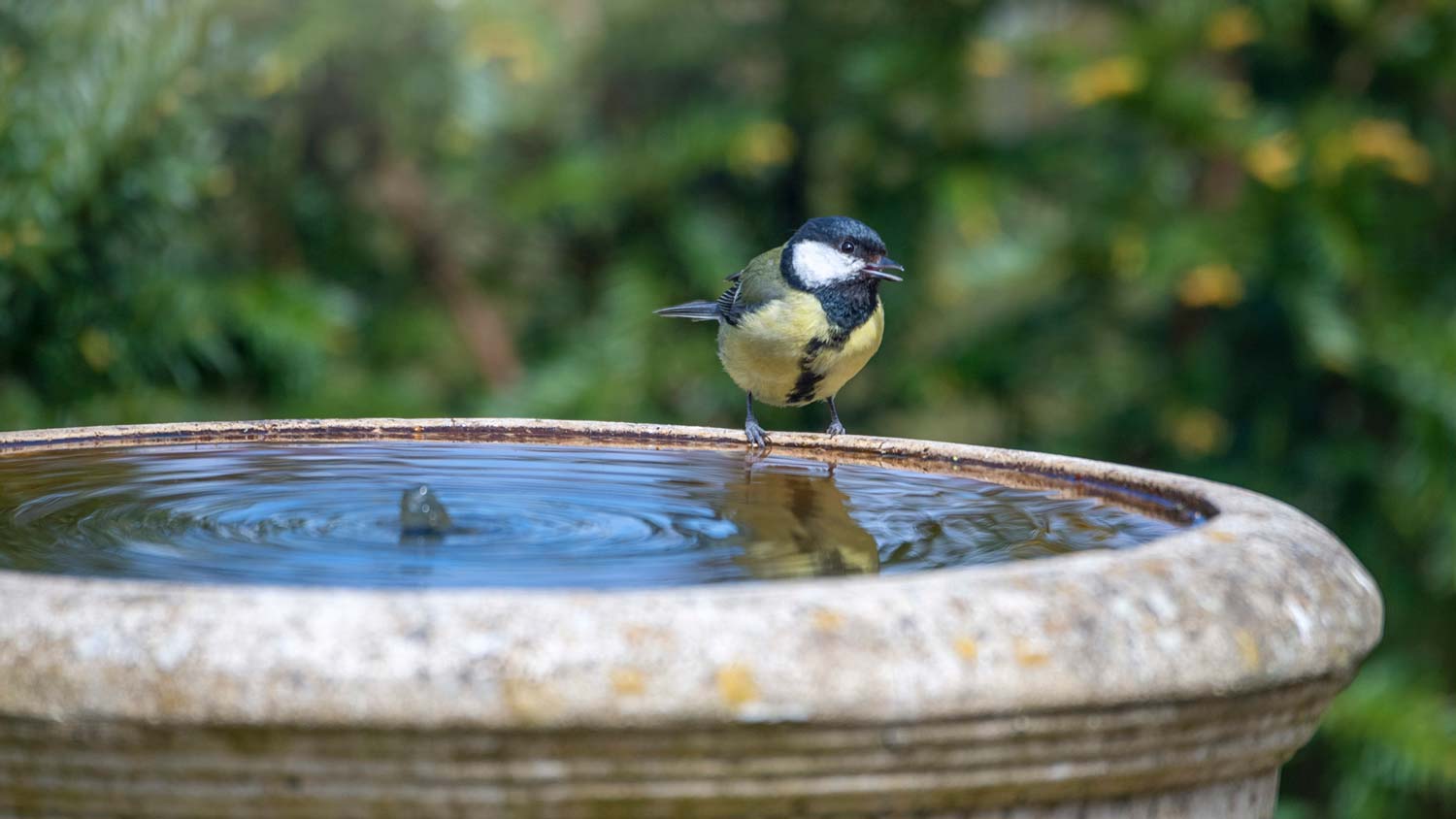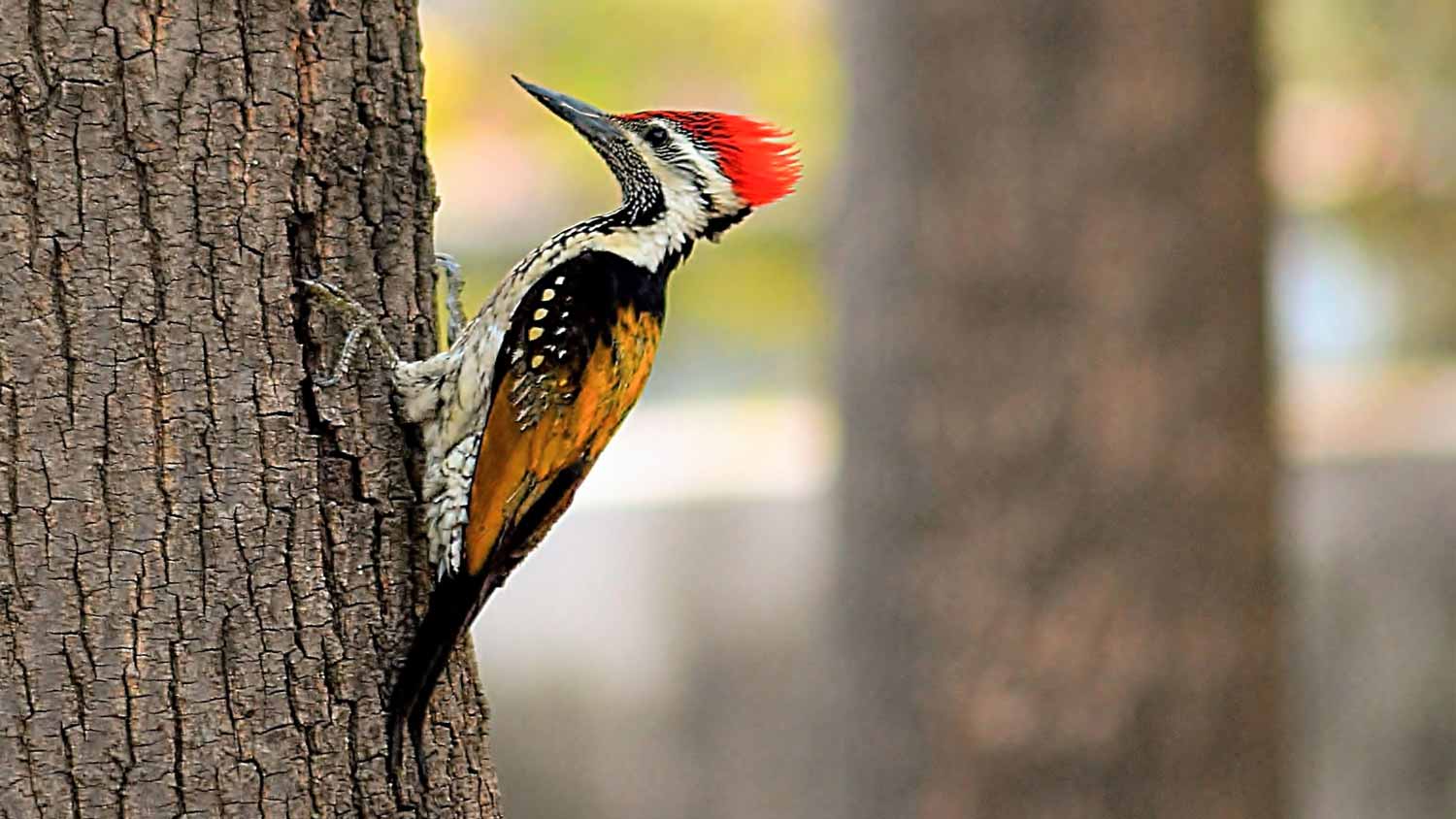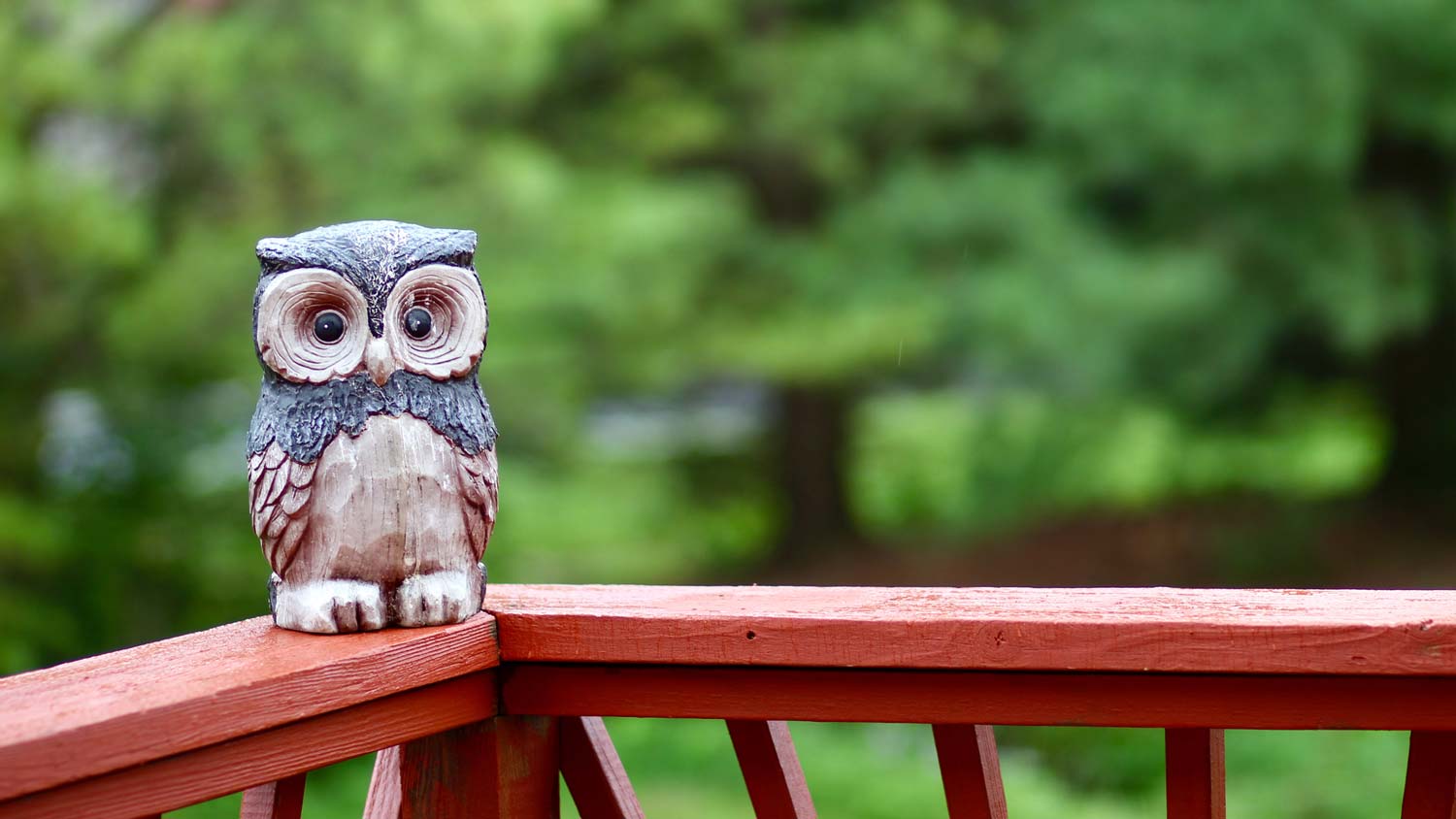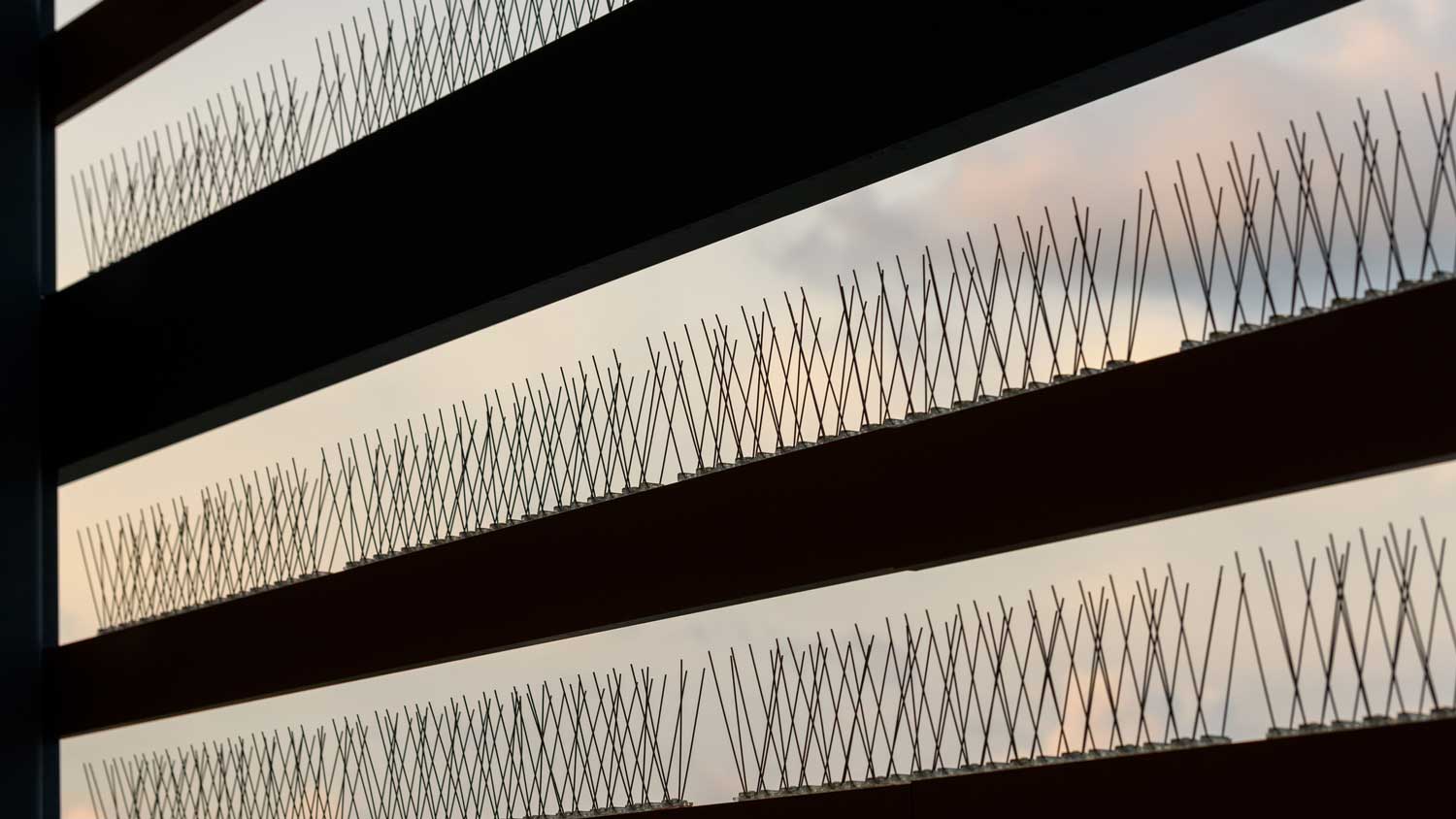
Whether you have bugs, bats, or rodents invading your home, you’ll want to contact an exterminator quickly. Find out how much pest control costs in Columbus, OH.
It’s time for the pigeons to find a new perch


Birds are a lovely addition to our natural surroundings, bringing beauty, song, and charm wherever they flutter. But let's face it; sometimes, some of our feathered friends overstay their welcome, causing all sorts of problems—from messing up your property to even posing health risks.
Some of the most troublesome species include geese, woodpeckers, pigeons, starlings, and robins. So how do you stop these creatures from hoppin' and a boppin' in your tree tops all day? Here’s how to get rid of birds when they become too comfortable in your space.

Understanding what makes your property a magnet for feathered visitors is crucial to keeping them away. Your yard may have abundant food sources—insects and plants that produce fruits, berries, or nectar—and a fresh water supply from a birdbath or small pond that provides a refreshing respite. Your trees may also be providing shelter from predators, your foliage becoming a sanctuary where they can rest, nest, and seek refuge. Even elevated perches that offer vantage points for observing potential mates, predators, and the overall surroundings, such as tall trees or utility lines, are likely to draw in birds.
Removing these elements to the best of your ability can go a long way to getting rid of your bird problem. Here are some more tips to help you out.
Nesting causes nearly 40% of bird-related issues for homeowners. Under the Migratory Bird Treaty Act, it is illegal to move or destroy a bird’s nest when it contains eggs or chicks, so the best course of action is to consult a professional. Waste and noise are the next most common problems homeowners face when birds fly in. Thankfully, significant exterior damage only accounts for about 13% of bird problems.

Habitat modification is your first defense when you have birds causing a stir in your space. It involves giving your property a makeover to make it less appealing to your avian guests.
Remember, a successful habitat modification plan considers each bird species' unique behaviors and preferences. Combining multiple techniques can yield the best results. Here are a few tips for common types of birds.
They are notorious for leaving behind droppings that can deface walkways, lawns, and buildings. Those that gather in large numbers around water bodies can contribute to water pollution, potentially transmitting bacteria and parasites.
Grow out your grass: Geese prefer shorter, manicured grassy areas, so consider allowing your lawn to grow taller—around a foot will do.
Reduce water access: Limit water features or ponds on your property—geese are attracted to water bodies for feeding and resting.
These birds can cause structural damage by pecking holes in buildings, trees, and utility poles. They are drawn to insects beneath surfaces and drum loudly, causing disturbances.
Maintain trees: Eliminate their preferred feeding and nesting sites by trimming dead branches and removing decaying trees.
Add physical deterrents. Install deterrents such as reflective tape, wind chimes, or netting to prevent them from pecking at surfaces.
These winged creatures, labeled invasive by the U.S. Fish and Wildlife Service, bring many problems. They damage crops, spread diseases harmful to humans and animals, compete aggressively with native birds, create noise, corrode surfaces with their droppings, and carry parasites like tapeworms.
Prevent nesting: Seal off potential nesting sites in nooks and crannies of buildings to discourage them from establishing residence.
Minimize food sources: Avoid leaving uncovered garbage or food that can attract starlings, and consider getting rid of your bird feeder.
They are notorious for their acidic and corrosive droppings, commonly roosting on ledges and eaves, creating unsightly messes. In addition to this aesthetic concern, pigeons are recognized carriers of diseases like histoplasmosis, cryptococcosis, and psittacosis, which can be transmitted through their droppings and result in respiratory issues and flu-like symptoms.
Block roosting areas: Install spikes or netting on ledges, rooftops, and eaves to prevent pigeons from roosting and nesting.
Cover openings: Seal off openings and crevices in buildings that pigeons might use as entry points.
Minimize food sources: Pigeons are opportunistic feeders—don’t leave garbage uncovered and ditch the bird feeder.
Renowned for their melodic songs, robins' territorial instincts present challenges. Engaging in combat and fatal interactions with other birds reveals their aggressiveness, particularly towards their own species. Their fervor drives them to crash into windows, mistaking reflections as rivals to confront.
Mark windows: During the breeding season (April to July), put decorative window film or masking tape on your window to prevent robins from attacking their reflections.
Remove food sources: Robins are primarily ground foragers, so remove fallen fruit and berries.

This process requires strategic placement and careful selection of decoys. Here are steps for effectively using them.
Opt for decoys that closely resemble natural predators or animals that threaten birds. We’ll review popular choices shortly.
High visibility is critical. Place decoys in areas where birds are likely to notice them quickly. Think strategically—position decoys near areas that birds frequent, such as feeding or roosting spots.
Birds may become accustomed to static decoys, so consider ones with movable parts or occasionally move them to maintain their effectiveness.
Use decoys with other deterrent methods, including habitat modifications, for better results.
Owl decoy: Owls are natural predators for many bird species. Place owl decoys on perches or structures where birds gather, such as roofs, fences, or poles.
Hawk decoy: Hawks are also bird predators. Placing hawk decoys on high perches can create a sense of danger for smaller birds.
Bird of prey silhouettes: Silhouettes of predatory birds, like eagles or falcons, can be effective against various bird species. Place these on windowsills, roofs, and other prominent locations.
Snake decoy: Snakes are a natural threat to ground-nesting birds like waterfowl and sparrows. Use them in areas where birds may be nesting on the ground.

Humane methods like spikes and netting will prevent many birds from nesting or roosting on rooftops, ledges, and other structures.
Spikes are typically made of plastic or stainless steel. Plastic spikes are often more budget-friendly, while stainless steel spikes tend to last longer.
Bird netting is a more compassionate method for discouraging birds from accessing desired spaces, says the Humane Society. They propose employing bird netting along ledges and window sills to shoo away birds instead of spikes.
Assess the area: Identify where birds nest or roost. Typical spots include ledges, rooftops, and eaves.
Prepare the area: Clean the area thoroughly to remove nesting materials, feathers, and droppings. The task will make it less attractive for birds to return.
Install spikes: Place bird spikes on ledges, windowsills, and other flat surfaces where birds perch. Spikes make it uncomfortable for birds to land and discourage nesting.
Set up netting: Install bird netting over areas like eaves, rooftops, trees, and gardens where birds may try to nest or eat. The netting creates a physical barrier, preventing birds from accessing these spaces.
Humane placement: Ensure that spikes and netting are installed properly and securely to avoid harming birds or other wildlife.
Regular maintenance: Regularly inspect and maintain the spikes and netting. Clean them of debris and ensure they are still effective.
Combine methods: Combine spikes and netting with other deterrents like habit modification and decoys for maximum impact.
Adhere to laws: Always follow local regulations and guidelines when installing bird control measures. Some bird species may be protected by law.
Consider alternative habitats: Provide bird nesting sites, such as birdhouses or designated areas away from your property.

In many areas, disturbing bird nests with eggs or chicks is prohibited by laws like the Migratory Bird Treaty Act, according to the U.S. Fish & Wildlife Service. Researching local regulations and seeking expert advice before acting on a bird's nest is essential to comply with legal and ethical standards.
Never move a nest with eggs. It is always best to wait for birds to abandon the nest before you attempt to remove it.
Timing matters: Choose the right time to remove nests. Ideally, this should be during the off-season when birds are not actively nesting or raising their young.
Identify the bird species: Determine the species that built the nest. If the species is protected by law, disturbing the nest could be illegal. it is advisable to consult with a professional
Safety gear: Wear appropriate safety gear, such as gloves and a mask, as some nests can carry diseases or parasites.
Preventive measures: Prevent further nesting in the exact location after removing a nest. This step could involve using deterrents, modifying the habitat, or blocking access points.
Cleaning up: Properly dispose of the nest material by bagging it in plastic and placing it in a covered outdoor trash can. This step will help avoid spreading diseases or parasites.
Monitor the area: Keep an eye on the area to prevent birds from returning and rebuilding nests.
Remember, bird nests contribute to the ecosystem. If removing nests is necessary, it's crucial to do so responsibly, respecting the birds and the laws that protect them.
On average, the cost of evicting birds and clearing their nests from your residence totals around $600. However, the precise fee hinges on a medley of influences.
The removal of a lone nest might come to a modest $100. If a significant roosting predicament takes root, the tally could surge to $2,000, factoring in preventive measures.
However, before taking any action to remove birds and nests, it's crucial to research and understand the legal implications in your specific area. It’s advisable to consult local wildlife authorities or a local bird control expert who can provide accurate information and guidance on proceeding legally and ethically.
Deciding whether to DIY or hire a pro to get rid of birds depends on the situation. If it's a minor issue, like a couple of birds hanging around your yard, you can handle it yourself by combining the methods shared above.
However, hiring a professional for more complex problems, like large bird infestations, birds causing damage to your property, or nest removal, is often wiser. They have the expertise and proper tools to address the problem effectively and humanely while ensuring long-term solutions.
From average costs to expert advice, get all the answers you need to get your job done.

Whether you have bugs, bats, or rodents invading your home, you’ll want to contact an exterminator quickly. Find out how much pest control costs in Columbus, OH.

Discover mosquito control service cost estimates, including average prices, key cost factors, and tips to save on professional mosquito treatments for your home.

Discover the average ant exterminator cost, factors impacting pricing, and how to save. Get expert tips to budget for ant removal and protect your home.

Bed bugs are infamous for sticking around. Calling a bed bug removal pro is the best way to solve this problem for good: Here’s who to contact.

Spiders help control bugs around your home, but you probably aren’t a big fan of either. Find out eight ways to keep the spiders (and their prey) at bay.

Bats love to roost in your attic, walls, and throughout your property. Here are some tips on safely and humanely removing them from your home.